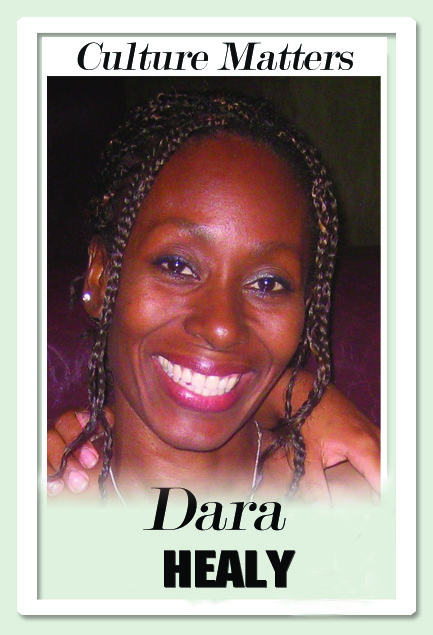A race called Mixed?

Culture Matters
A Conversation about Race
Negro – child of negro and negro 0% white
Sambo – child of mulatto and negro 25% white
Mulatto – child of white and negro 50% white
Quadroon – child of white and mulatto 75% white
Mustee – child of white and quadroon 87% white
Quintroon – child of white and mustifino 97% white
Octoroon – child of white and quintroon 98 % white
– Seven Slaves & Slavery, Anthony de Verteuil
A PHOTOGRAPHER of African heritage took photos of my light-skinned girlfriend as we walked together in Carnival costumes. He thanked her, smiled broadly and left without acknowledging me, despite knowing me since I was a child. It was not that he ignored me, he simply never saw me. Next to her, I had become invisible.
Colourism is a term coined in 1983 by Alice Walker, author of The Colour Purple. It means “prejudicial or preferential treatment of same-race people based solely on their colour.” Colour gradations affect how people of African heritage are perceived and treated by other races. Worse, the colour scale still affects how African people treat each other and causes a warped sense of self, manifested in extreme ways such as skin bleaching.
For clarity, my use of the word "negro" in this article does not mean I agree with its current use since the word negro does not denote a race. The word comes from the Spanish for "black" and was used by enslavers to describe the dark skin of African peoples. In Latin the word for black is
niger, perhaps where the N-word came from.
During 400 years of African enslavement, the words negro and slave were intertwined. For instance, legislation and official documents would contain the description “Negro Slave.” Thus, for some within the African community, the word negro is almost as offensive as the N-word, primarily because of its negative association with skin colour.
Colourism is an integral aspect of racial socialisation, that is, how people learn about adapting to racism. This includes conversations about Africans that people of other races have with their children. It is why Gerald Aboud and others throughout my life would advise people of African heritage to “rise up and work towards improvement” or “forget about that slavery thing.” But moving on from systemic racism is an enormous undertaking.
For generations, people of African heritage have endured deliberate acts of sabotage. This includes, for instance, the destruction of Black Wall Street in the US or the stifling of black businesses in TT. It includes decimation of African spirituality, language and family life. Emasculation of the African male was fundamental to this calculated dehumanisation.
Colour coding was part of the strategy. Over time, the colour complexity on plantations deepened, whether through consistent rape of African women by white masters or general sexual relations. Often, enslaved children of the plantation owner received favourable treatment or prestigious jobs on the plantation; darker-skinned enslaved were more often than not relegated to strenuous field duties. Given that Africans were property, “ultimately, it was the owners who decided that a slave’s colour would confer status and job opportunity.”
Skin colour became linked to social status. Lighter-skinned Africans were pronounced – by whites – to be more intelligent and physically desirable. It was therefore preferable to have characteristically Caucasian features including light-coloured eyes, a straight nose and “good hair.” Significantly, close examination of the enslaver’s colour scale reveals that Africans could never become 100 per cent white, no matter how light-skinned they became.
Locally, 165 years of British colonialism and the presence of other races further complicated racist colour codes. In the 1960s George Lamming wrote, “No black boy wanted to be white, but it was also true that no black boy liked the idea of being black. Brown skin was a satisfactory compromise...”
Colour hierarchy remains a normal aspect of our interactions today. In advertising we equate people of a certain colour with luxury brands. We casually use racist terms like “black but bright.” We even debated whether the current Prime Minister was “too dark.”
Resolving these festering issues is essential for our multi-ethnic nation to heal. Terms like “mixed” and “dougla” cannot effectively treat with intensifying racial complexities. Further, racism is so deeply embedded that the invisibility of some in society is normalised, expected. Africans are still subjected to stereotyping and destruction of their communities. We must dismantle racist structures that perpetuate these imbalances. We must dismantle the colour code so none of us is made to feel invisible and everyone is included in the picture.
Dara E Healy is a performance artist, communications specialist and founder of the NGO, the Indigenous Creative Arts Network – ICAN


Comments
"A race called Mixed?"